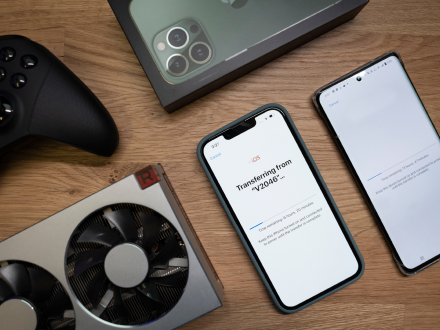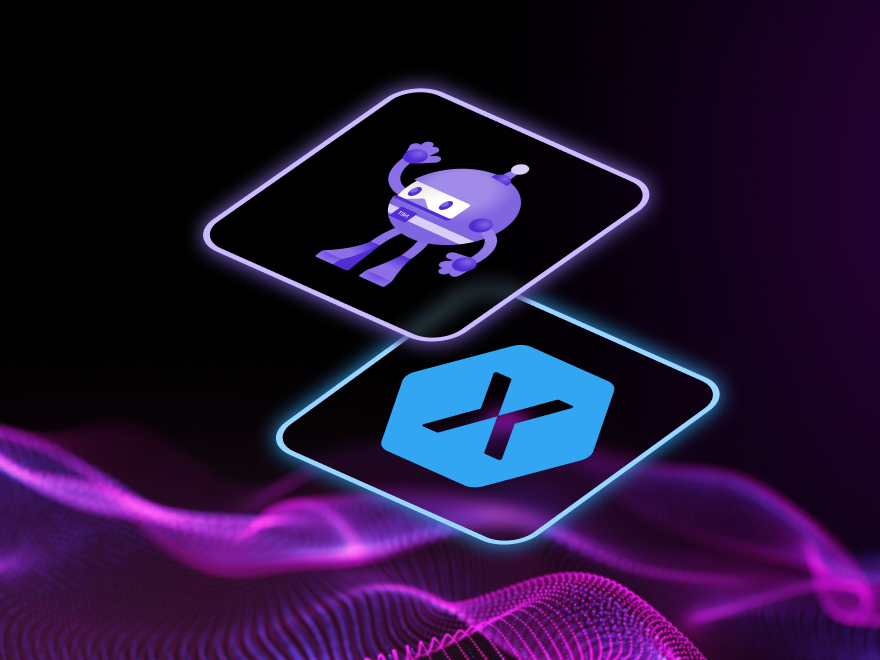Your message has been sent.
We’ll process your request and contact you back as soon as possible.
The form has been successfully submitted.
Please find further information in your mailbox.


Hate to state the obvious here, but the modern world has gone full digital. And as you talk to your colleagues over Zoom, and cars talk to mobile apps, and ACs talk to thermostats, and doorbells talk to home servers, there’s one thing that renders this arrangement less efficient as we’d like.
It’s latency and bad connection that ultimately lead to customer dissatisfaction with connected products and services.
Today, we discuss how WebRTC improves connection between peers, enhancing user experience.
Before getting into it, we’ll first debunk the notion of technology.
WebRTC is an open real-time communication technology that streamlines data transfers over the internet, prioritizing low latency and high speed. Built on API without the reliance on plugins, it is highly compatible and supported by all major browsers. For native Android and iOS applications, a library offers the same functionality as on the web and is easy to implement. The WebRTC project is open-source and enjoys support from industry leaders like Apple, Google, Microsoft, and Mozilla.
“Before open protocols came along, businesses had to build proprietary software for video conferencing. This meant not only taking on a big upfront investment but also keeping around a permanent in-house team to support the solution, fix bugs, and make sure it worked with other parts of the organization’s digital system.
With WebRTC, things have changed. They’ve brought the same functionality directly to your browser. No more tinkering around with clunky, limited software – simply use a browser to connect from almost any device and you’re good to go.”

CTO at Innowise
Imagine the convenience and efficiency this brings to your team meetings or client consultations – allowing easy, straightforward communication minus the traditional hurdles.
But WebRTC’s usefulness doesn’t end at video conferencing: its ability to transfer almost any data with low latency makes it a go-to solution for IoT developers. In the IoT industry, WebRTC facilitates low latency data transmissions for smart home devices, telehealth solutions, supply management, and more. With this technology becoming more and more available along with demand growth, companies are looking for ways to safely and quickly relay data – and many are turning to WebRTC for this very reason.
Consider a scenario where a doctor needs to monitor a patient’s vital signs remotely in real time. Using WebRTC, the data can be securely transmitted with minimal delay, ensuring well-timed medical interventions. Or think about smart home devices, where instant video feeds from security cameras or doorbells are relayed to your smartphone. The low latency and high reliability of WebRTC make it an ideal choice for these kinds of tasks.
Need a solution for your IoT products?
We leverage WebRTC to build software solutions that guarantee stable performance.
The main shtick of WebRTC is that it directly connects the peers without the need of an intermediary. Here’s a breakdown of the entire data transmission process that allows us to see how WebRTC achieves minimal latency.
The ICE framework finds the best path to connect the peers by collecting network candidates (IP addresses and ports) and testing connectivity. ICE can work over different network configurations, including Network Address Translations (NATs) and firewalls, to keep this connection stable.
WebRTC uses STUN servers to discover the public IP address and port allocated by the NAT. If direct peer-to-peer communication isn’t possible, TURN servers are used to relay the media traffic – meaning that the connection is maintained even through NATs and firewalls.
WebRTC encrypts data channels and media streams using Datagram Transport Layer Security (DTLS) and Secure Real-time Transport Protocol (SRTP). This ensures that all communication is secure and protected from eavesdropping or tampering.
The GetUserMedia API allows web applications to access media streams from the user’s device. Once it’s grabbed that media, it hands it over to WebRTC, which gets it ready to share. These media streams are then packetized and transmitted over Real-time Transport Protocol (RTP), making sure everything is in sync and time-stamped.
During the signaling process, the peers negotiate the codecs for the communication session. This ensures that both parties can encode and decode the media streams in a compatible format, allowing for smooth communication.
Once the connection is established, the peers exchange media streams directly without an intermediary server. This peer-to-peer setup helps achieve low-latency, real-time communication – resulting in a stutter-free and responsive user experience.
These protocols let WebRTC guarantee a stable connection between peers, which is beneficial for cases that require real-time data exchange, such as video streaming, calls, telemedicine, IoT, and other use cases.
Low latency and high efficiency: WebRTC makes real-time communication with minimal delay a breeze. Its peer-to-peer architecture lets data be transmitted directly between users – eliminating server-related delays, which is important for apps where even minor setbacks can impact user experience.
Built-in encryption: WebRTC encrypts the data using protocols such as DTLS and SRTP. to protect users from data breaches. The measures implemented in WebRTC also eliminate the need for additional features.
Compatibility with various platforms: WebRTC is an open standard supported by all major web browsers and operating systems. This allows developers to target a broader audience with their apps without worrying about compatibility issues.
Adaptable to different network conditions: WebRTC uses ICE to find the best path for data transmission, which helps it optimize performance and maintain connection in challenging environments.
Easily scalable: whether for small-scale usage like personal video calls or large-scale implementations such as live streaming events, WebRTC offers the scalability needed to meet different demands.
Boost retention and satisfaction rates with your users.
With a reliable connection, your service becomes an extension of their everyday lives.
WebRTC is a versatile, lightning-fast solution that many businesses love and others can’t live without. Here are some critical use cases where WebRTC shines:
Because WebRTC enables high-quality audio and video calls directly in the browser, there’s no need to build separate apps or plugins to talk to people over the internet. Additionally, a browser-only conferencing solution is much more convenient for the end user: all they have to do is head to the website. No software to install or figure out: inviting other people is just a matter of sending a link.
One of the big names using WebRTC is Google Meet. While apps like Zoom may be native to the platform, they make it easy to send invites via web links.
At Innowise, we have also completed several projects using WebRTC to transfer data without latency. Partnering with one of our clients, we have built a comprehensive conferencing tool that not only featured stable connection during virtual meetings, but also included schedule management and AI integration.
Regarding online gaming, lag is a foe more formidable than the opposing team. It is important that the in-game data and communications are transmitted without delay, as it is shier seconds that decide the outcome.
This is why many gaming companies build their products relying on WebRTC for data transmission. Cloud gaming services like NVIDIA GeForce Now and chat apps used by gamers like Discord are prime examples.
WebRTC’s ability to handle real-time media streams makes it an excellent choice for video streaming applications, providing a smooth and responsive viewing experience.
Notable examples include Netflix Party: an extension that uses WebRTC to synchronize video playback and enable real-time chat among viewers watching Netflix together. Twitch, a popular streaming platform for gamers, also uses WebRTC to allow viewers to experience real-time interaction with streamers.
IoT is another field of technology where responsiveness is expected, not appreciated. Devices like Nest Cam use WebRTC to stream data to users’ smartphones in real time, and platforms like Teladoc use it to facilitate real-time video consultations between doctors and patients.
Having a stable and quick connection with WebRTC can seriously boost the overall user experience by providing immediate assistance whenever it’s needed. Apps like Zendesk and Intercom integrate WebRTC to offer real-time chat and video support, helping businesses solve their customers’ issues as quickly as possible.
WebRTC helps make education more accessible through online learning tools that leverage WebRTC for high-quality connection. For people in underserved communities where reliable internet may be hard to access, WebRTC is a big help.
The online education sector greatly benefits from WebRTC’s real-time capabilities, which facilitate interactive and engaging learning experiences. Online LMSs like Coursera rely on WebRTC to offer real-time discussions and collaborative learning experiences, enhancing the effectiveness of their online courses.
In short, WebRTC’s flexibility and speed make it a must-have for all sorts of industries – from communication and gaming to IoT and online education. By enabling real-time interactions, WebRTC dramatically improves the user experience and meets the growing demand for immediate connectivity.
Whether you’re boosting your remote work setup to eradicating gaming lag, WebRTC has proven to be a must-have piece of tech. Its ability to deliver low-latency, high-quality communication directly through browsers or mobile apps eliminates many traditional barriers to connectivity.
WebRTC’s broad compatibility and ease of implementation have made it a popular choice for businesses across many industries. By reducing the need for proprietary software and extensive server infrastructure, WebRTC not only lowers operational costs but also accelerates the deployment of real-time communication features. Its robust security protocols ensure that data transmission remains secure – addressing one of the biggest concerns in today’s digital landscape.
As the adoption of this tech continues to grow, WebRTC is set to make even more waves in how we connect and communicate online.












Your message has been sent.
We’ll process your request and contact you back as soon as possible.

By signing up you agree to our Privacy Policy, including the use of cookies and transfer of your personal information.